The types of tea available to a new tea drinker can get confusing. This guide explains the six different types of tea, plus a guide to herbal and flavored tea. So many choices!
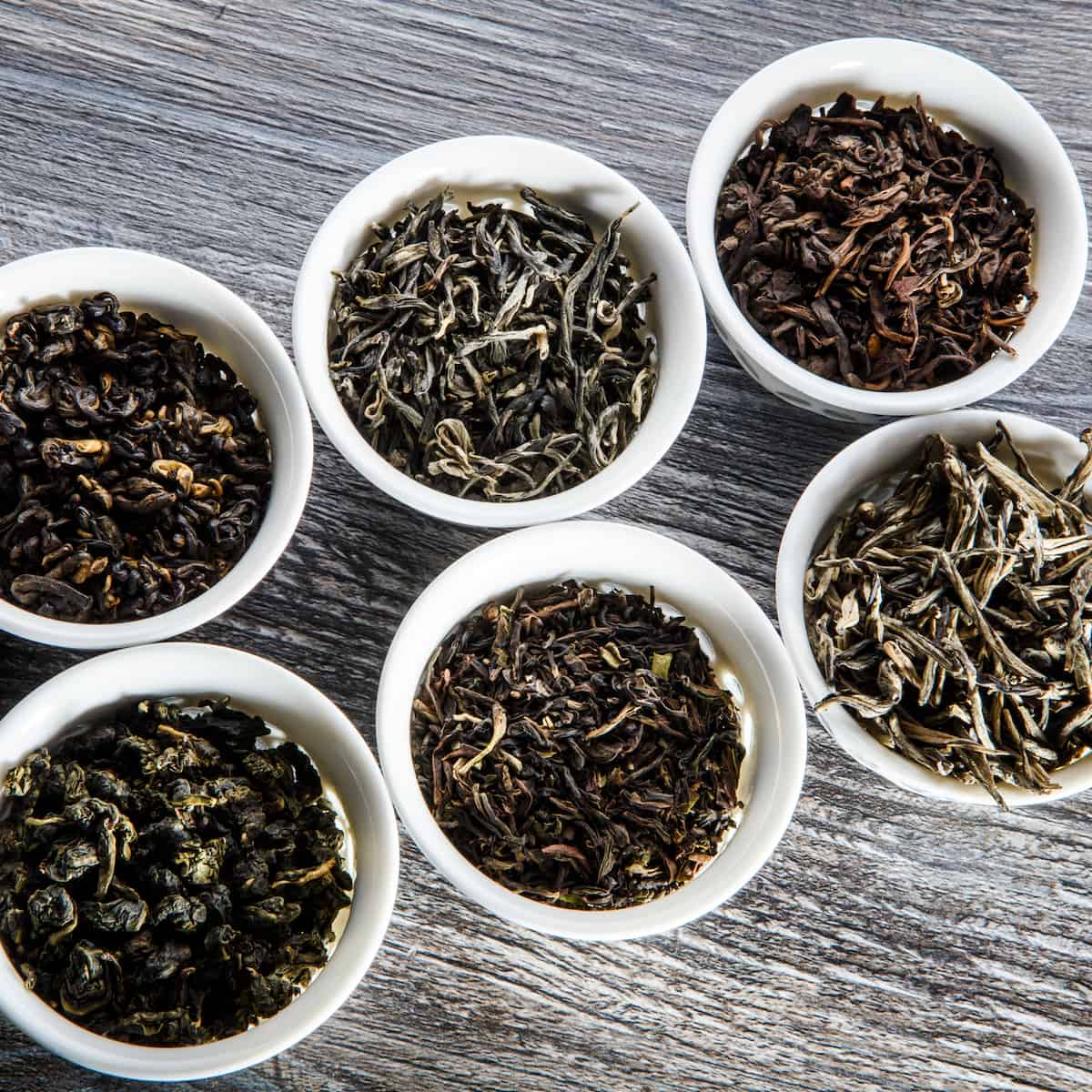
What do you need to know about the different types of tea to enjoy a good cup of tea?
The four basic facts you need to know about tea:
- All tea comes from the leaves of the Camellia Sinensis plant. These are often referred to as "true teas."
- There are six main categories of tea, often referred to as tea types: green, yellow, white, oolong, black, and pu-erh. The difference is in the cultivar and how the tea is processed or manufactured.
- Herbal teas are called tisanes and are not considered tea in the context of this definition.
- Flavored teas can be from the Camellia sinensis plant, an herb, or fruit. Many are a mixture of all three.
What Is Tea?
Tea comes from the evergreen shrub called Camellia sinensis. There are two varietals: Camellia sinensis var. sinensis (Chinese tea) and Camellia sinensis var. assamica (Assam or Indian tea). All tea comes from this plant.
It's incredible to me how so many different types of tea liquor can all come from the same plant. This is what makes tea so fascinating. The region where the tea is grown, the cultivar, and the way it is processed gives its distinctive flavor.
Thousands of tea estates around the world produce tea. Each estate masterfully crafts a unique tea originating from the Camellia sinensis plant. The process of picking and drying determines the type of tea; green, yellow, white, oolong, black, and pu-erh.

Shades of Earl Grey - $19.95
from: Firebelly Teas Inc.
The Six Different Varieties of Tea
The different kinds of tea are described by their main types.
1. Green Tea
Green tea is not oxidized. It is roasted, rolled, and dried with steam, oven heat, or pan-fried, preventing oxidation, also known as fixing. This produces a refreshing tea with a sweet-smelling aroma. Green tea has a lighter flavor than black tea. It is most prevalent in eastern countries but more so in the west.
2. Yellow Tea
Yellow tea is not oxidized. After fixing, yellow tea leaves are heaped or piled and then wrapped in a damp cloth to rest for a period. The heat and humidity give the leaves a yellow hew. It's a scarce tea produced only in China, and very little is exported.
3. White Tea
White tea is barely oxidized and has a sweet, subtle flavor. White tea is mainly processed from the bud only but can incorporate the first or second leaf.
4. Oolong Tea (Wulong)
Oolongs are partially oxidized, within a range of 12 to 80 percent. Oolongs are some of the most prized teas due to their intricate processing, which provides a complex flavor that evolves with each sip. The taste all depends on the skills of the tea maker.
5. Black Tea
Black tea is fully oxidized, producing a hearty deep rich flavor of amber-colored tea. It is the most popular style of tea in most western countries and is used in many blends such as Earl Grey, English Breakfast, and Chai.
6. Pu-erh Tea (Fermented)
Pu-erh tea is an aromatic black tea originating in China. The leaves are double fermented and compressed into bricks or cakes. This made it easy to transport and exchange tea in ancient China. Still produced today, this is perhaps the most exotic of Chinese tea.
Consider yourself lucky if you have a local specialty tea shop nearby. It's nice to try the tea in person. Many people have to buy tea online, which can be a bit daunting, considering there are over 700 online tea shops.
As a guide, I put together a review of some of my favorite online specialty tea shops.
Types of Black Tea
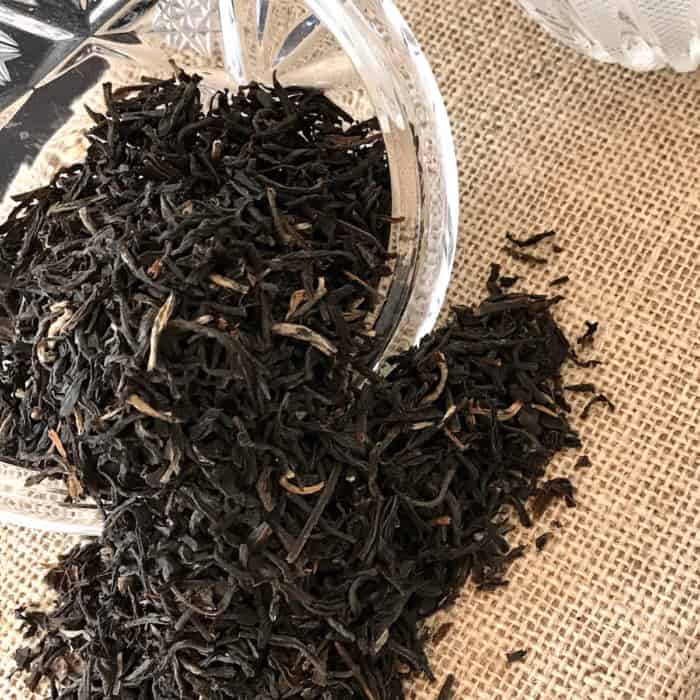
Many tea estates around the world produce black tea. The two highest-producing black tea countries are China and India.
Chinese Black Tea
All black teas are made from completely oxidized tea leaves. In the case of Chinese black teas, the leaves are slowly withered and oxidized, coaxing out a softer, more fragrant tea than the strong astringent tea famous in the other major black tea-producing countries. The Chinese also favor unblended whole loose-leaf tea.
Chinese black teas are mainly produced in the southern provinces of China, including Anhui, Fijian, and Yunnan. Chinese black teas are very different than black teas from India with a much mellower flavor and rarely require the addition of milk and sugar, although you certainly could add milk or sugar. Chinese black tea is sometimes called red tea.
Indian Black Tea
India has three major tea-producing regions –Darjeeling, Assam, and Nilgiri. Much like the wines of France, tea in India is named after the region in which it is grown.
The place where the tea is grown and produced has much to do with how the tea will taste. This sense of place is called terroir; the idea that the soil, rain, sun, moon, and climate all impact the finished tea.
Indian tea includes both varietals of the Camellia sinensis plant. The Camellia sinensis var. assamica from Assam, India, and the Camellia sinensis var. sinensis from China.
Both varietals are used to make black tea. Most Indian tea is produced as black tea, although you will find some estates producing green, oolong, and white tea. Large leaves characterize the Assam tea leaves.
Types of Green Tea
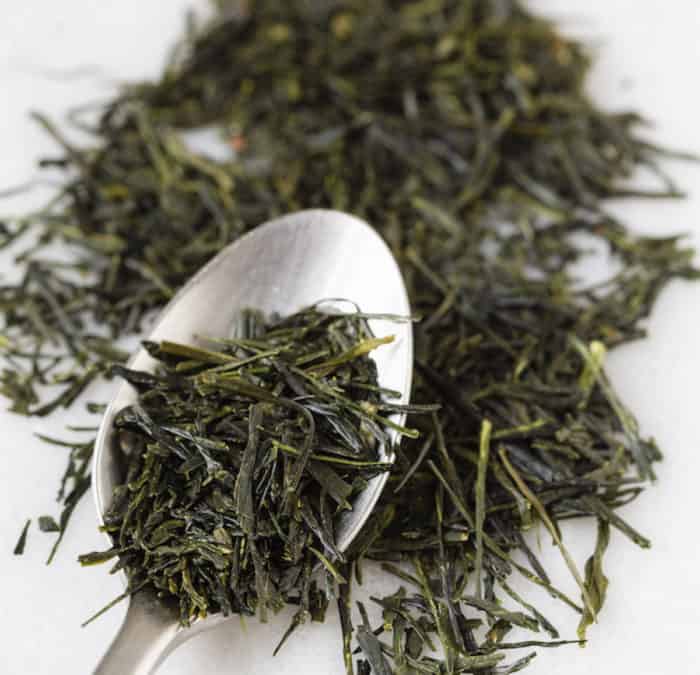
China and Japan produce some of the best green teas.
Green tea is not a specific type of tea, but a category of tea, much like white wine, is a wine category. Just as there are many different types of white wine, there are hundreds of green teas.
All green tea comes from the same plant as black, oolong, white, and Puerh tea, the Camellia sinensis plant. There are two primary varieties of the tea plant Camellia sinensis and Camellia asamica, with many different cultivars or subvarieties. There are over a thousand different subvarieties of the Camellia sinensis plant.
Japanese green tea is different than Chinese green tea. All Japanese green teas are steamed during processing and classified as either sun-grown or shade-grown.
Types of White Tea

White Tea has a smooth, delicate flavor making it perfect for any occasion. Only the fresh new leaf bud of spring is selected for the famous Silver Needle tea. White tea is a tea style from the Camellia sinensis plant that is minimally processed and not oxidized like black and oolong tea. In most cases, the leaf bud alone is selected for use in white teas.
Emerging leaves and budsets in the spring season contain the highest concentration of nutrients, volatile oils, and chlorophyll, making this tea the sweetest and most coveted.
Traditionally white tea came from the Fujian Province in China, with Silver Needle and White Peony being popular for tea drinkers. Today it is produced in other Chinese provinces and tea-producing regions throughout India, Sri Lanka, South Asia, and Rwanda.
Types of Oolong Tea
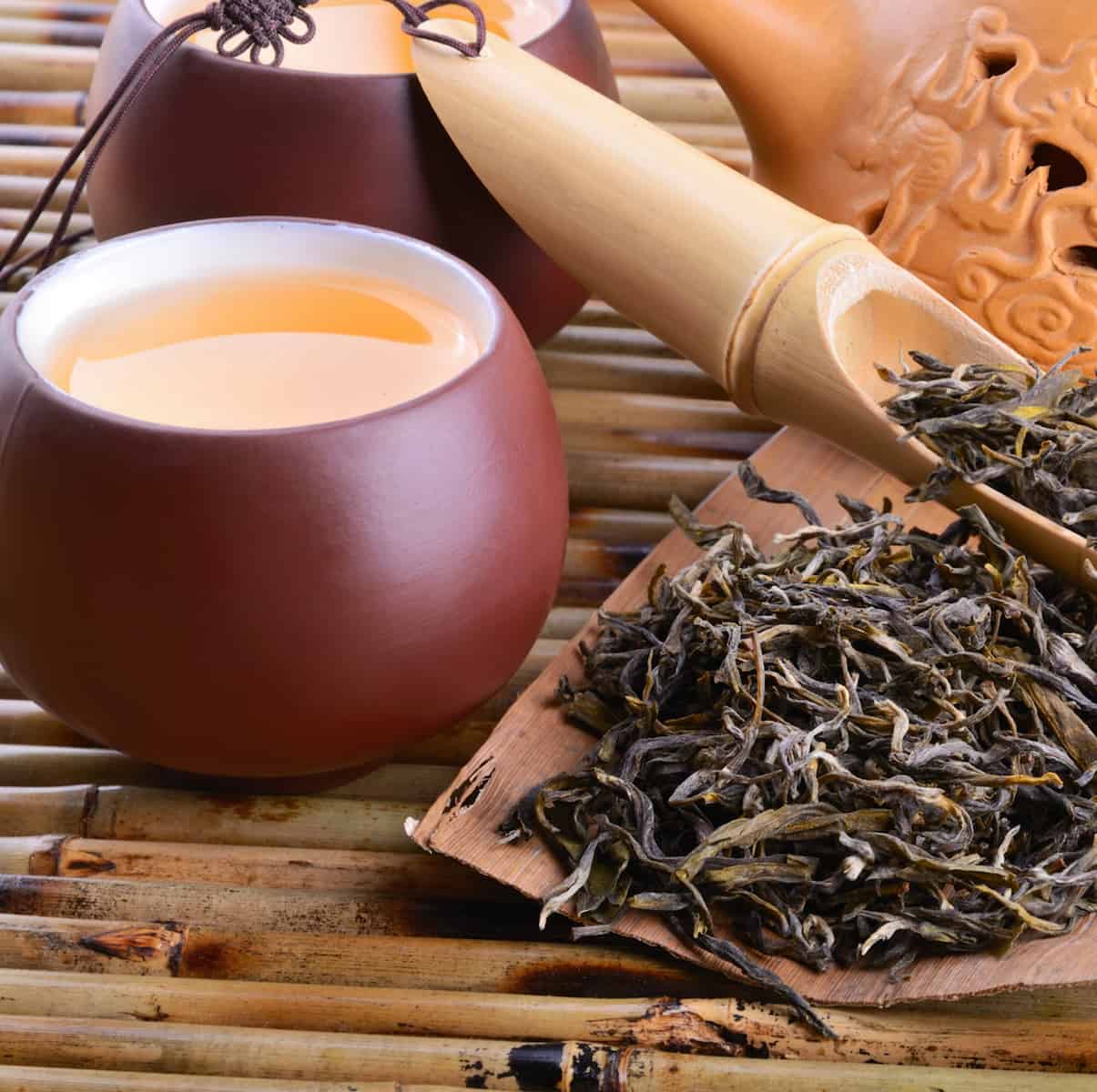
Oolong tea is some of the most prized due to its intricate processing. The complex flavors evolve with each sip. The majority of oolong comes from the Wuyi Mountains of Southern China and the mountainsides of Taiwan.
Oolong teas are partially oxidized, within a range of 12 to 80 percent. The varying oxidation produces teas, sometimes called green or black oolong. The vast spectrum of flavors, from light and floral to dark and mineral, offers many variations.
How is Tea Made?
Tea leaves from the Camellia sinensis plant are plucked from new leaf growth, and only the first two leaves and bud are selected for processing. The new leaf is the sweetest.
Tea experts categorize tea by the manufacturing process in terms of oxidation, the color of the finished leaves, and the color of the resulting liquor.
To understand the different tea varieties, it's best first to understand how tea is made.
All fresh leaves are left to wither after plucking to reduce their moisture content. As soon as the leaves are plucked, they begin to oxidize. Oxidation changes the enzymes influencing the flavor of the tea. Heating the tea leaves stops the oxidation process.
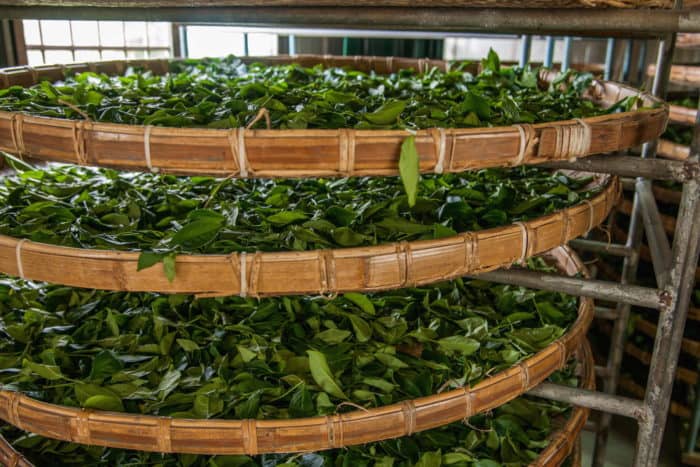
Green and yellow teas are heated (or fixed) as soon as they reach the processing plant to prevent oxidation. This is done by steaming, pan-firing, or oven drying.
Oolong and black teas are partially or fully oxidized. The leaves are first withered, allowing them to dry and remove most moisture. Firing and tumbling are applied to the oolongs in varying degrees to prevent further oxidation.
The following chart is a beautiful visual of the six types of tea and how they are processed.
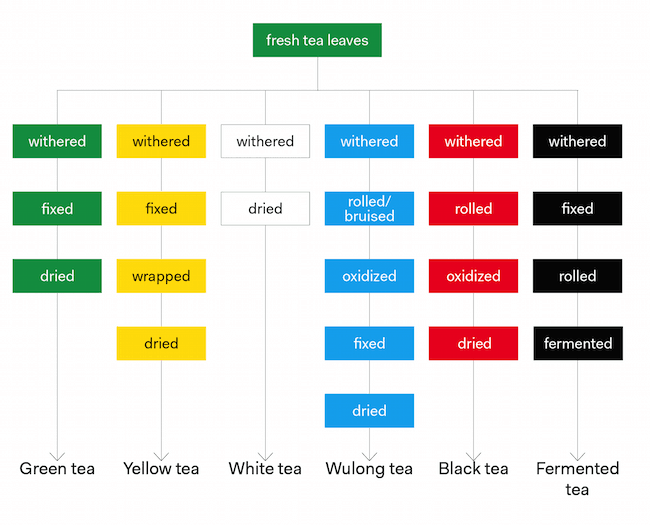
This Tea Processing Chart is by Tony Gebely
What is Herbal Tea?
Herbs are plants that are used for their aromatic or medicinal properties for use in foods and medicines. Throughout history, humans have used herbal infusions for their therapeutic benefits.
Herbal teas are made from plant parts such as leaves, bark, stems, roots, berries, flowers, or seeds and are infused in boiling water for some time.
The resulting herbal tea is called a tisane (pronounced ti-Zahn). There are hundreds of herbs used to make tisanes, such as hibiscus, chamomile, mint, tulsi, rooibos, and yerba mate. They are often prepared as a wellness remedy.
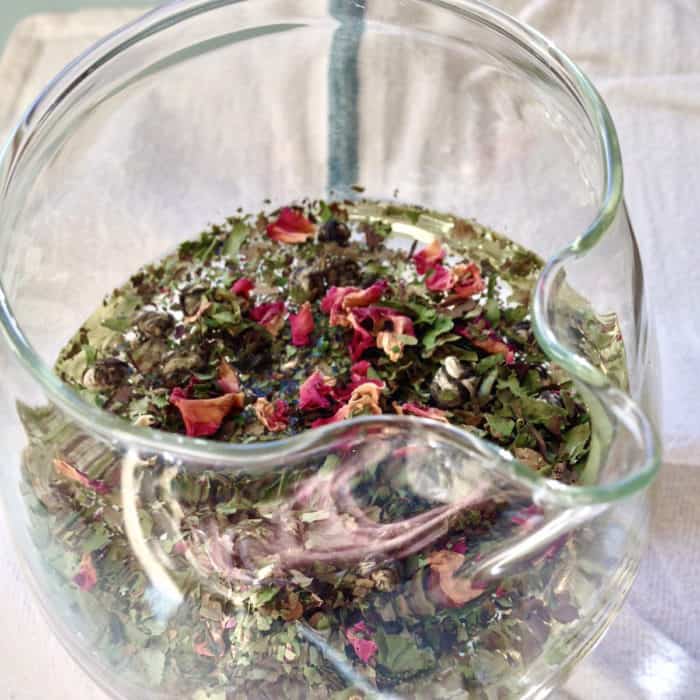
What is Flavored Tea?
Dry tea leaves act like a sponge and absorb the flavors and scents of their surrounding contacts. This can be good or bad.
The reason for storing your tea in sealed, airtight containers is so that it will not pick up unwanted surrounding flavors.
Tea is flavored in a variety of ways. Traditionally, the Chinese have added flavor to teas through scenting.
Types of Tea Flavors
Flower Scented Tea
The most famously scented teas are Jasmine teas. Many other flowers are used to scent tea leaves, such as rose, marigold, lily, magnolia, chrysanthemum, and orchid.
Scented teas are made by adding fresh or dried flowers to dried tea that is already processed. This can be done with black, green, or oolong teas.
The finished scent is very light and pleasant. If you come across a very heavily scented tea, like you're drinking from a perfume bottle, it is most likely artificially scented.
In large commercial settings, scenting is done by spraying the dried tea leaves with a liquid flavor or scent - either natural or artificial.
Traditional scenting is done by combining the dried tea leaves with the desired ingredients and sealing them in a container for a period of time.
Fruit Scented Tea
You can use any fruit to scent a tea, such as apples, plums, peaches, apricots, and berries. Fresh or dried fruit can be used.
- Dried fruit or dried fruit peel is called a fruit-infused tea.
- Adding fruit juice to a brewed tea creates a flavored tea.
Earl Grey is the most famous fruit-scented tea. It is made from a blend of black tea leaves scented with the oil from the rind of sour bergamot oranges.
Smoke Scented Tea
Lapsang Souchong is a traditional Chinese black tea from the Fujian province. The tea is smoke-dried over a pinewood fire giving it its distinctive smoky flavor.
Genmaicha is a Japanese green sencha tea blended with puffed rice kernels to give it a smokey taste. This gives it a light nutty flavor.
Spice Tea
In the Indian culture, spices are often added to flavor tea, the most popular being masala chai and ginger tea.
Related:
- 10 Best Online Tea Shops
- Top 5 Best Black Tea Selections
- Tea Lover's Guide to The Best Green Tea
- What is Oolong Tea?
- 7 Herbal Tea to Boost Your Immune System
Herb and Tea Combinations
Moroccan Mint is the most famous herb-tea combination. Dried mint leaves are blended with dried tea leaves for brewing. A sprig of fresh mint is added for serving.
The most commonly used tea for Moroccan Mint is gunpowder green tea. It is one of the easiest green teas to brew and is very forgiving.
Blending and infusing teas with flavors is a culinary art form. As you can see, the possibilities and combinations become endless. And it can be quite fun.
Tea for Beginners Start Here >>



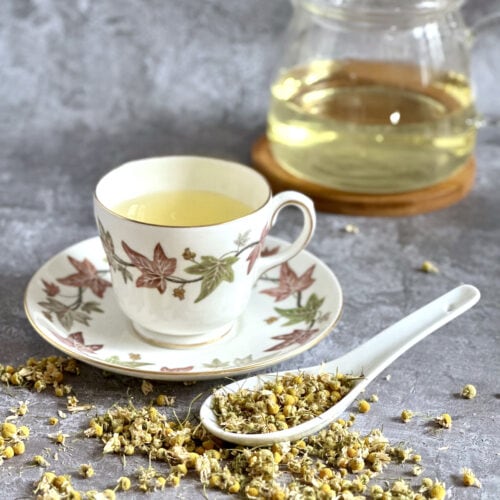
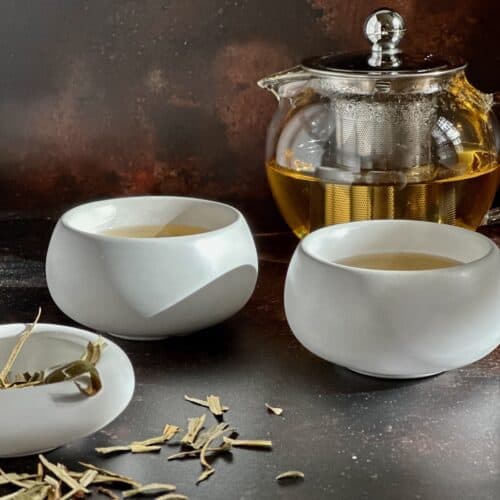
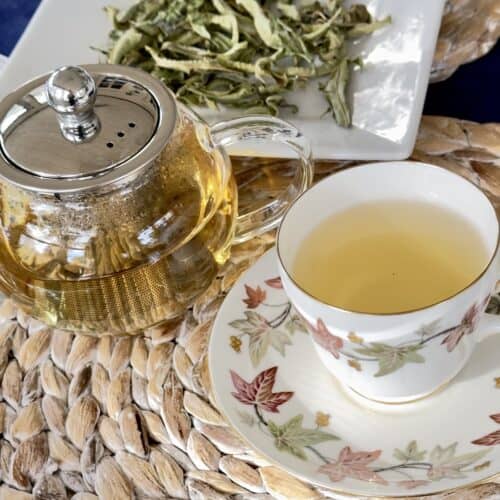
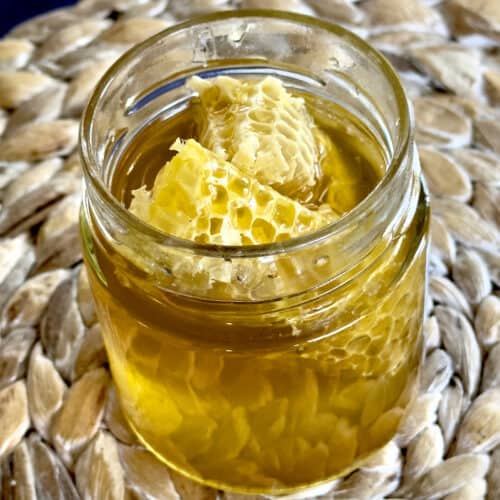
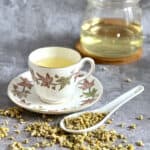
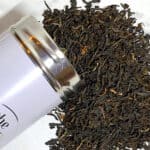
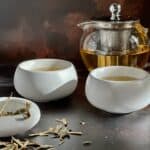
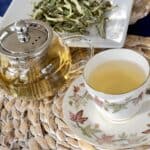


sakya R.K.
Madam Mary Ann,
Greeting from Nepal.
I have read some books and gone through several article on tea. When, i came across to go through your site, it was amazing, how you have presented every world and sentences story in a simple form, comprehensive. I feel your guide is best to learn and understand the wisdom on tea.
Thank You,
Sakya R.K.
Kathmandu
Mary Ann Rollano
Thank you so much for your kind words. It means a lot to me knowing I am helping others in their tea journey.
Taylor Bishop
Thanks for helping me learn more about tea. I actually didn't know about smoke scented tea, like how the Lapsang Souchong is a tea that is smoke-dried over a pinewood fire. This sounds like a really cool cooking process and I wouldn't mind seeing it in action and how long the process could take.
Mary Ann Rollano
There are so many things to learn about in tea because there are so many variations. That's what makes it so much fun to learn about.